Incorporating the principles of wayfinding into your building can offer a plethora of benefits to its end users, including increased satisfaction, reduced stigma and isolation of disabled users, and improved orientation and experience for new visitors.
It can also boost productivity and health, says a 2010 Center for Inclusive Design and Environmental report, and given the studies detailing the impact wayfinding has on human psychology, occupant satisfaction, health, long-term performance, and the financial bottom line, ignoring it altogether is effectively reducing the inclusiveness of your building.
Due to their modularity, and the fact they’re offered in an excess of sizes, colours, patterns and pile types, carpet tiles are considered to be one of the most effective materials among the many used to facilitate wayfinding.
Carpet tiles are generally considered durable, and are easy to install, clean and replace. They also offer better acoustics than some other popular floor coverings, which is one of the reasons Graphite Architects chose carpet tiles for their Mingara Leisure Group Corporate Offices project in Newcastle.
“They offered acoustic absorption [and] softness underfoot… [while still being] firm enough to feel like a commercial environment,” says Principal Design Architect, Sandy Strazds.
“The randomness of the pattern [also] really suited the awkward angular geometry of the existing space.”
Besides the obvious style, colour and size differences among the surfeit of carpet tiles available in the Australian market, other points for distinction include their backing type and sustainability. In recent years especially we’ve seen carpet tile manufacturers making efforts to improve the environmental footprint of their carpet tiles to create a sellable point of difference among their competitors, and a lot of these improvements have been in the material makeup of the tile backing.
 Carpet tiles were used by Graphite Architects at Mingara Leisure Group Corporate Offices, Newcastle. “[They] offered acoustic absorption [and] softness underfoot… [while still being] firm enough to feel like a commercial environment,” says Principal Design Architect, Sandy Strazds. Image: Graphite Architects
Carpet tiles were used by Graphite Architects at Mingara Leisure Group Corporate Offices, Newcastle. “[They] offered acoustic absorption [and] softness underfoot… [while still being] firm enough to feel like a commercial environment,” says Principal Design Architect, Sandy Strazds. Image: Graphite Architects
Most manufactures now offer bitumen, PVC and fiberglass free products and some like Above Left, Shaw Contract Group, Interface (among others) go to great lengths to certify their products with key green building product certifiers like GECA, Green Star, Green Tag and more.
A PROVEN COMBINATION
Carpet tiles can provide colour coding to define different working zones or departments, as well as edging for corridors to direct pedestrian flow. In spaces, such as schools, offices, libraries and airports, where different sections offer different types of activities and facilities, demarcations in carpet tile colour and patterns can prompt a person to change their experience of that space and act accordingly. Often, a designer may choose to use neutral colours in the central or general part of a space, and then introduce splashes of colour and pattern into the other areas to differentiate.
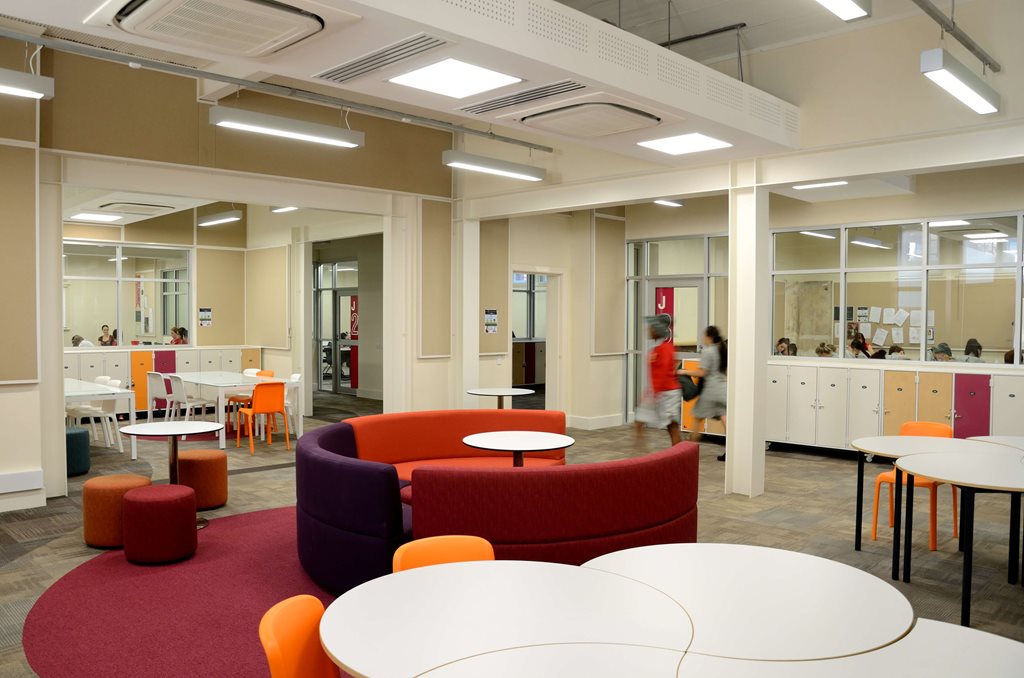 Retaining the existing building fabric of Mercedes College St. Joseph’s Year 12 Learning Centre, Site Architecture Studio’s implementation of carpet tiles provided an opportunity to introduce some colour. Image: Site Architecture Studio
Retaining the existing building fabric of Mercedes College St. Joseph’s Year 12 Learning Centre, Site Architecture Studio’s implementation of carpet tiles provided an opportunity to introduce some colour. Image: Site Architecture Studio
Site Architecture Studio did just this with their Mercedes College St. Joseph’s Year 12 Learning Centre project in Perth. While the main tile, a neutral colour with some movement, was used throughout the classrooms and corridors, the breakout feature had large circles or contrasting carpet tiles under the selected furniture.
“This helped slow the space down and encourage the girls to stop and linger,” says Site Architecture Studio Associate, Laura Adams.
Retaining the existing building fabric of the heritage building, Site Architecture Studio’s implementation of carpet tiles provided an opportunity to introduce some colour. This contrasted with the existing wall colours and white plasterboard, timber and corrugated iron ceilings. “The selection of carpet tiles was great, as our circular designs to the breakouts, and the thin strips to indicate existing walls were easily and affordably able to be integrated,” says Adams.
Similarly, Harrison & White in collaboration with Paul Coffey Architects used carpet tiles in their St. Bernard’s Primary School, Year 5&6 Learning Hub project in Victoria. Through visual variation in floor finishes, the architects aimed to integrate, yet differentiate internal and external spaces. Harrison & White Associate Hannah Rowe explains that the green of the artificial grass outside continues throughout the building with matching green carpet tiles, while breakout spaces were created by the clustering of blue carpet tiles.
 Through visual variation in floor finishes, Harrison & White and Paul Coffey Architects aimed to integrate, yet differentiate internal and external spaces at St. Bernard’s Primary School, Year 5&6 Learning Hub, Victoria. Photography by Ben Hosking
Through visual variation in floor finishes, Harrison & White and Paul Coffey Architects aimed to integrate, yet differentiate internal and external spaces at St. Bernard’s Primary School, Year 5&6 Learning Hub, Victoria. Photography by Ben Hosking
DISADVANTAGES
Carpet tiles do come with their disadvantages though. Firstly, they don’t always appear to be a cohesive singular carpet, and this disjointed look may not be suitable for certain spaces. They also create seams every 12, 18 or 24 inches, which will always be visible, no matter how carefully the carpet is installed.
While replacing a carpet tile removes visible stains from spills and accidents, it won’t necessarily get rid of odours that have soaked into the floor beneath. Unlike wall-to-wall carpet where a backing material can be made waterproof to provide protection, due to carpet tiles having many seams, they can’t provide the same protection.
Although carpet tiles are made for high traffic areas, this lack of waterproof protection means they’re not ideal for places that are exposed to moisture, such as the kitchen, laundry, bathroom and entrance of a building.
AVAILABLE IN AUSTRALIA
Here’s a list of the latest carpet tiles available in Australia. Product descriptions are provided by suppliers.
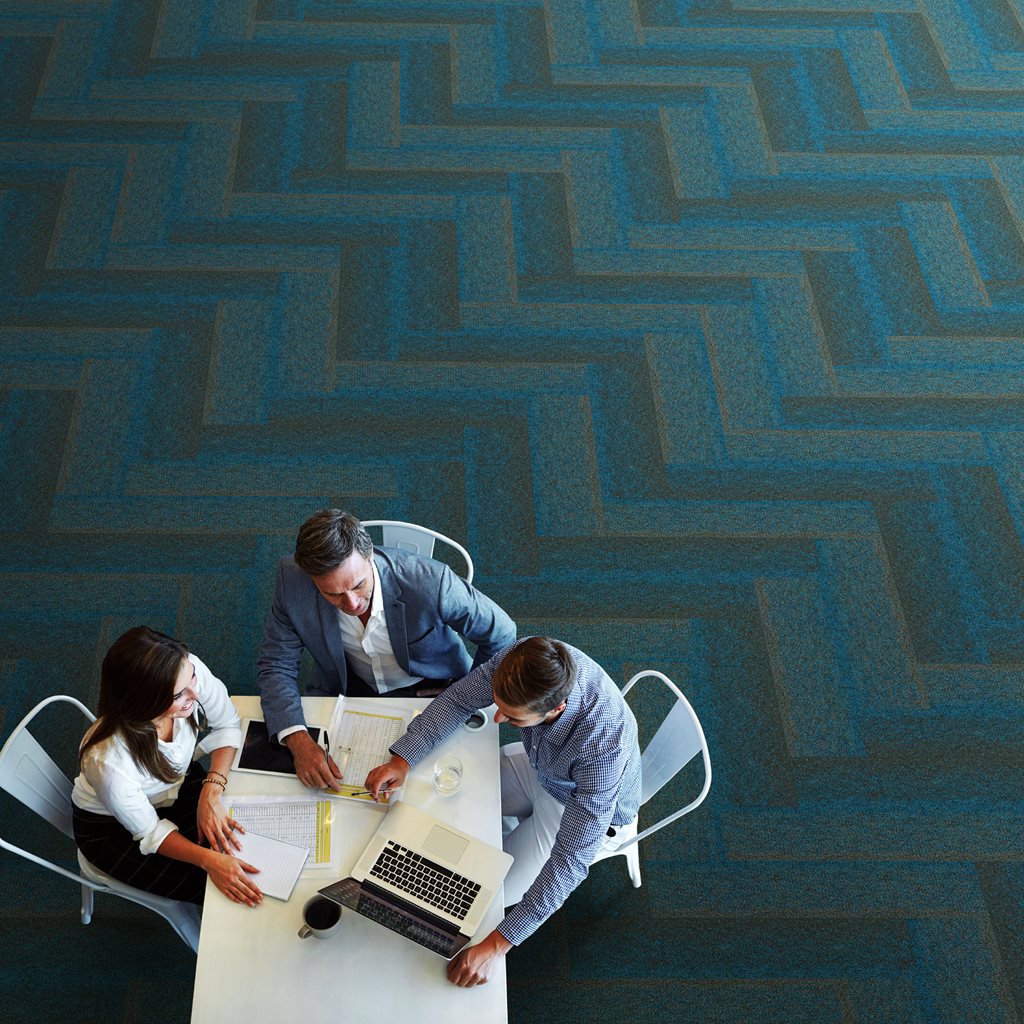 Tavola Plank Carpet Tile by Above Left
Tavola Plank Carpet Tile by Above Left
The Tavola collection offers a textural design in a stunning range of colours. Tavola was inspired by the memory of scribbling on paper and seeing the texture of the surface beneath the paper create an unexpected pattern. With Ecosoft backing, the carpet delivers superior acoustic benefits, thermal efficiency, underfoot comfort, dimensional stability and can be installed over new slabs. It also contains 50 x 600ml recycled PET bottles per square, making it an excellent choice for the environment.
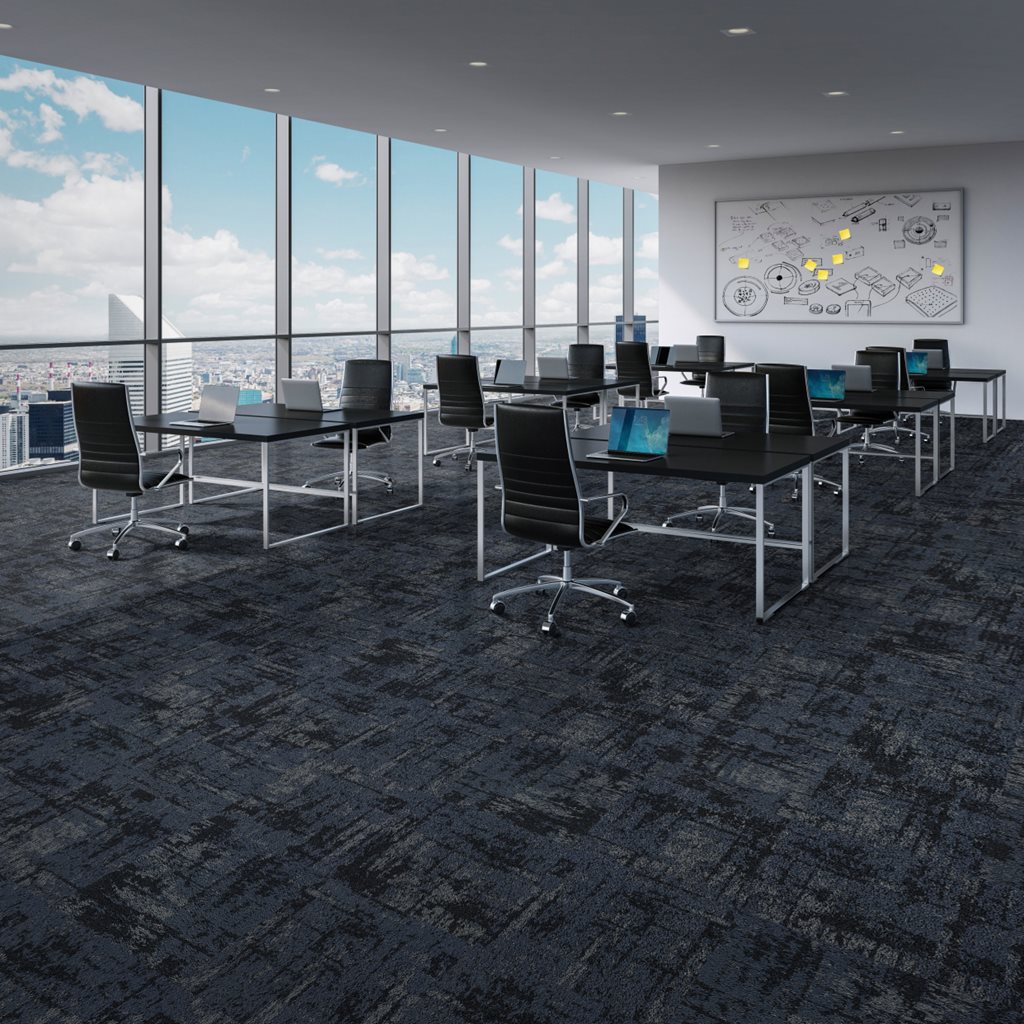
Earth Rock by Belgotex
Belgotex Floors’ Earth Rock range, inspired by the folds and fissures of rocks, is a Stainproof SDX (Solution Dyed Nylon) product. It is available with the dimensionally stable backing system, EOS BAC, which offers sound absorption and sound reduction properties, and is also environmentally friendly. Available in multiple colourways, and reflected in the random, layered craggy textures of natural earth rock, the range is a solid new foundation for any heavy commercial setting.
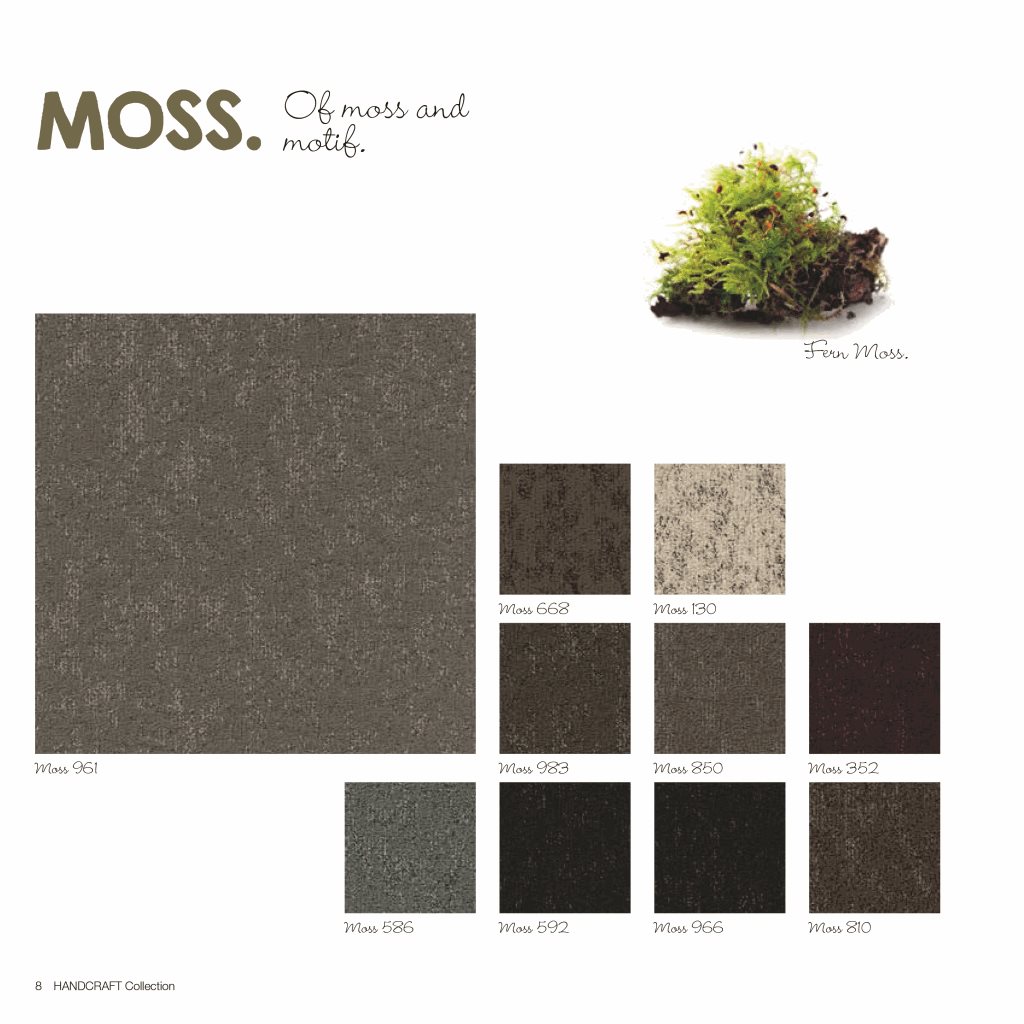 The Handcraft Collection by Gibbon Group
The Handcraft Collection by Gibbon Group
Nature gives us so much to work with. Colours, shapes and patterns. But also, materials to construct everything we can dream of. The Handcraft Collection brings together scraps and stitches of nature’s tale. Invite the outside in with the collection’s organic patterns and hues. A green inspiration for a tranquil atmosphere. Get away from the hustle and bustle of your busy workspace and enjoy the peace and quiet of the outdoor experience. Discover the fragmented designs of Moss, Leaf, Willow and Grind. Parallel pieces of a pure puzzle.
 Motarclay by Nolan UDA
Motarclay by Nolan UDA
Modern designers often believe that everything old, is new again. The Mortarclay carpet tile range was developed to embrace the ageing process of concrete. Available in four unique colours, Mortarclay compliments the hard surfaces often associated with a minimalistic design.
 Net-Effect by Interface
Net-Effect by Interface
Net-Effect from Interface recruits discarded fishing nets from poor fishing villages to create a 100 per cent recycled yarn modular carpet tile. It was a recent winner at the 2014 Good Design Awards and is a finalist for the BPN Sustainability Awards.
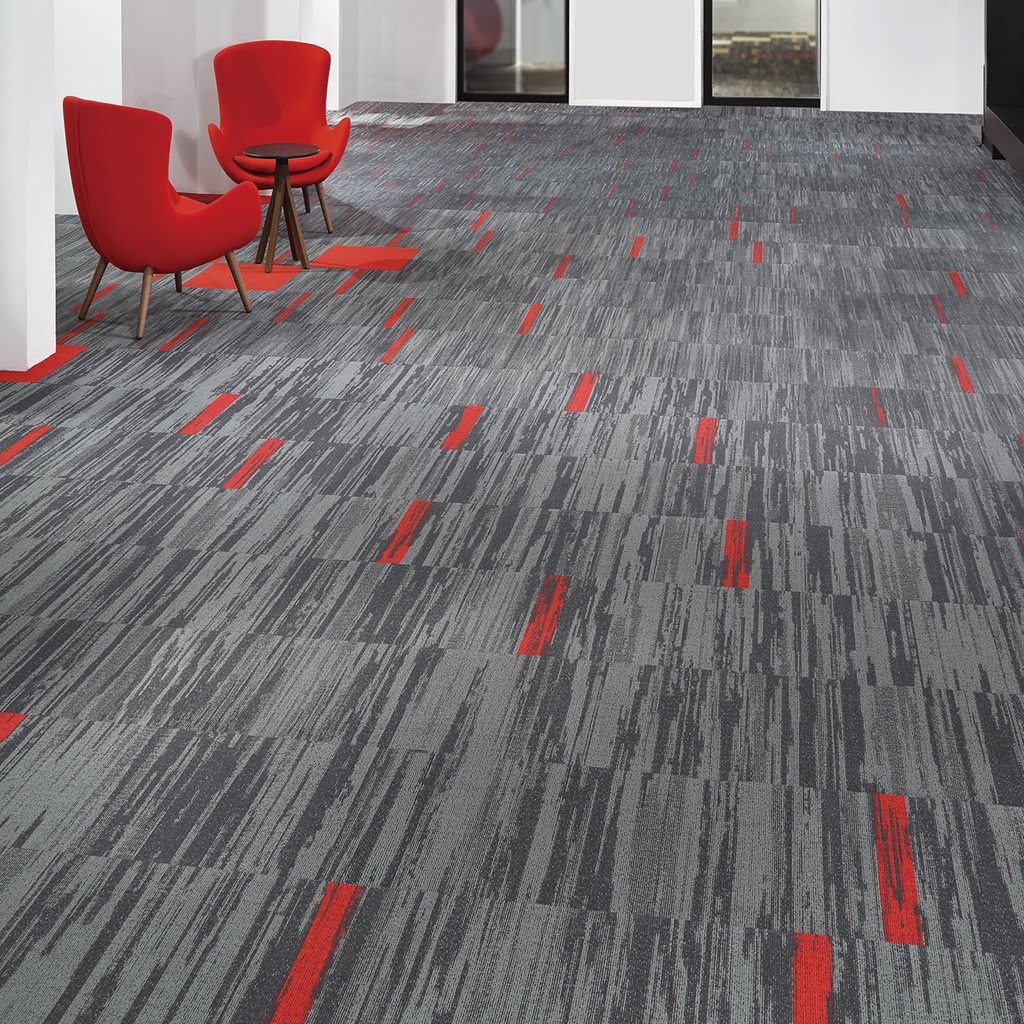 The Common Thread Collection by Ontera
The Common Thread Collection by Ontera
The Common Thread collection is a mix of randomness and unique patterning that only nature can create. Common Thread’s unique patterning was inspired by the distinctive skin of a tree. The natural shedding and renewal of its layers reveals individual scales and textures of bark patterns. This collection is a family of patterns that seamlessly and organically shift into each other. A common thread of bright accents further illuminates this dynamic shifting, providing designers with boundless opportunities to define space.
 Configure by Shaw Contract
Configure by Shaw Contract
Shaw Contract’s Configure is an extension on its award winning Hexagon carpet tile collection. Designed to promote impromptu interaction, Configure assists with wayfinding and provides alluring, visual interest. Deconstructed, rhythmic patterns and bold colour encourage a more imaginative, playful approach with installation. The four carpet styles of Configure– Plane, Base, Contact and Color Shift – allow designers to create unique arrangements in a variety of colours and endless layout possibilities. Configure is constructed with premium Eco Solution Q nylon and EcoWorx backing.

